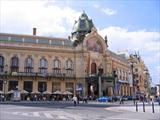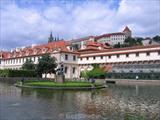Czech Republic Currency: Czech Koruna
European Union but not yet the euro
The Czech Republic has been a member of the European Union since 2004, but it has not yet accepted the euro as its currency. This should happen in the next years, but the exact date is uncertain yet.
The official currency of the Czech Republic is the Czech Koruna (Czech crown). Its international code is CZK and the symbol frequently used in Czech shops is Kč (koruna ceska).
Czech Koruna banknotes and coins
CZK banknotes in circulation include CZK 5,000 – CZK 2,000 – CZK 1,000 – CZK 500 – CZK 200 – CZK 100 – CZK 50. There used to be also the CZK 20 banknote, but it is not valid any more.
CZK coins in circulation include CZK 50 – CZK 20 – CZK 10 – CZK 5 – CZK 2 – CZK 1. There used to be also the coins worth 10, 20, and 50 hellers, but these are not valid any more. A heller is 1/100 of koruna, it is called haler in Czech or halir in common speaking language. Though some prices (especially of food) are still quoted korunas and hellers, payments are rounded to whole koruna in shops today.
Symbols on Czech Koruna banknotes and coins
For a visitor to Prague the CZK 50 coin is especially interesting. It is a very beautiful bimetallic coin and there is the Prague Castle and Charles Bridge on it. You can take it home as a souvenir.
On the CZK 20 coin there is St. Wenceslas on the horse – the patron of Czech state and the same rider whose statue stands at the top of “his“ Wenceslas Square.
On the CZK 100 banknote there is a portrait of Charles IV, the king who built the Charles Bridge, Karlstejn, and Charles University in Prague.
On the CZK 5,000 banknote there is the first Czechoslovak president Tomas Garrigue Masaryk.
Topics: Money & Banking, Czech banks, Czech Koruna, Czech National Bank, Czech Republic currency, Karel IV, Masaryk, St. Wenceslas, The Euro










